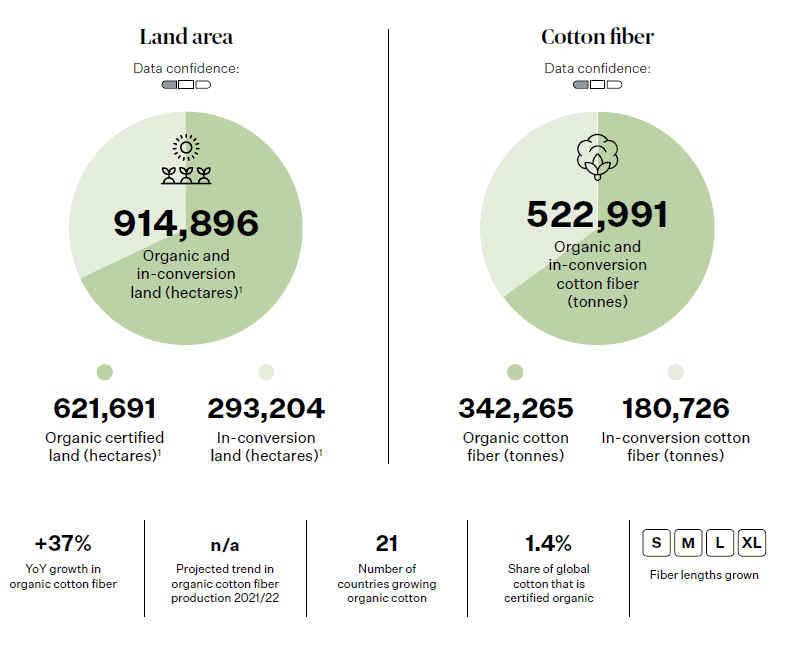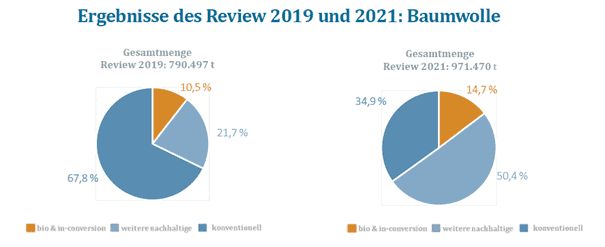More organic cotton on the world market
More organic cotton on the world market
The Textile Partnership has been cooperating with Textile Exchange for many years. Recently, the organisation published the Organic Cotton Market Report (OCMR). According to the report, more and more farmers are converting from conventional to organic cultivation. The area of in-conversion has increased fivefold to 293,204 hectares from 2018/19 to 2020/21. Textile Exchange states:
"Based on our estimates, the 2020/21 global harvest saw 342,265 tonnes of organic cotton fiber produced on621,691 hectares of certified organic land, and 180,726 tonnes of in-conversion fiber produced on 293,204 hectares of land in-conversion to organic. Compared to 2019/20, this represents an estimated 37% growth in organic fiber. With overall cotton production reported by ICAC in 2020/21 totaling 24,380,507 tonnes, this means that 1.4% of all cotton grown is estimated to have been organic."

This is good news for the members of the Partnership for Sustainable Textiles. Because they have set themselves a common goal: By 2025, the share of sustainable cotton is to increase to a total of 70 per cent, and the share of organic cotton contained therein to 20 percent.
Im Review-Prozess erhebt das Textilbündnis die Mengen an verschiedenen Fasern, die die Mitgliedsunternehmen beschaffen. Laut den Zahlen aus dem Review-Prozess 2021 beschafften die Bündnisunternehmen:
- 971.470 t cotton in total, of which
- Organic cotton (142,512 t = 14.7%)
- other/other sustainable cotton (489.620.88 t = 50.4%)
Organic cotton and otherwise sustainable cotton combined, this is an increase from 32.2% to 65.1% compared to the 2019 review process. Read on the Review Processpage, which standards the Textiles Partnership recognises as organic or otherwise sustainable.
With regard to their sustainable cotton target, the Partnership members are thus on the home stretch: Only 5.3 percentage points are missing for organic cotton to reach the overall target of 70%.

The Textiles Partnership is promoting more organic cotton on the world market with a pilot project and with the Partnership Initiative . Both projects are running in India, where, according to the OCMR, most organic cotton is grown worldwide (38%).
The organic cotton pilot project in India (South Odisha) pursues the above-mentioned goal through, among other things, training, targeted promotion of women, support in the conversion to organic cultivation, GMO-free seeds, purchase guarantees and premiums.
The Organic Cotton Alliance Initiative also aims to make the organic cotton supply chain fair, environmentally friendly and economically viable. 11,500 cotton producers in the Indian states of Maharashtra, Madhya Pradesh, Rajasthan, Odisha and Gujarat are expected to benefit from the project by switching to organic farming. For this purpose, the farmers receive GMO-free seeds and support in converting to organic farming, among other things through training in organic farming methods and humane working conditions, as part of the"OCA Farm Programme" .




